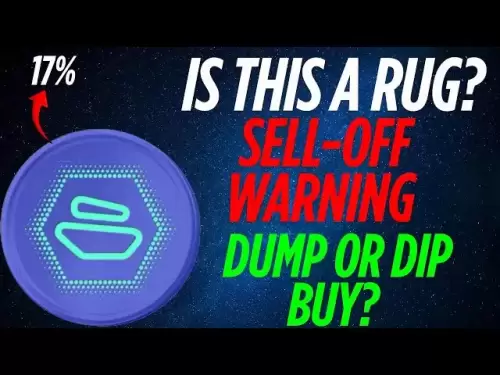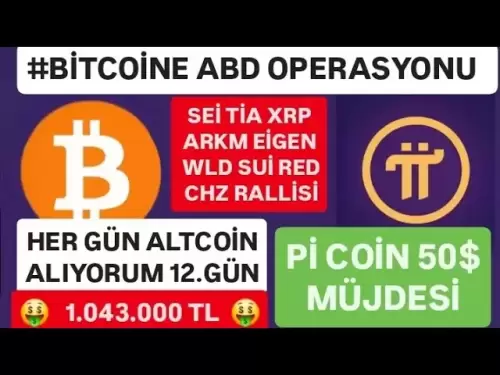-
 Bitcoin
Bitcoin $108,708.8110
0.60% -
 Ethereum
Ethereum $2,561.6057
1.91% -
 Tether USDt
Tether USDt $1.0001
-0.03% -
 XRP
XRP $2.2795
0.57% -
 BNB
BNB $662.2393
1.00% -
 Solana
Solana $153.1346
3.74% -
 USDC
USDC $1.0000
0.00% -
 TRON
TRON $0.2877
0.97% -
 Dogecoin
Dogecoin $0.1710
3.93% -
 Cardano
Cardano $0.5871
1.61% -
 Hyperliquid
Hyperliquid $39.6663
1.68% -
 Sui
Sui $2.9032
0.79% -
 Bitcoin Cash
Bitcoin Cash $496.1879
1.71% -
 Chainlink
Chainlink $13.5807
3.01% -
 UNUS SED LEO
UNUS SED LEO $9.0777
0.61% -
 Stellar
Stellar $0.2514
4.51% -
 Avalanche
Avalanche $18.1761
1.86% -
 Shiba Inu
Shiba Inu $0.0...01173
1.72% -
 Toncoin
Toncoin $2.8010
-4.23% -
 Hedera
Hedera $0.1594
3.21% -
 Litecoin
Litecoin $87.0257
-0.53% -
 Monero
Monero $319.1217
1.79% -
 Polkadot
Polkadot $3.3853
0.68% -
 Dai
Dai $0.9999
-0.01% -
 Ethena USDe
Ethena USDe $1.0003
0.02% -
 Bitget Token
Bitget Token $4.3420
-0.97% -
 Uniswap
Uniswap $7.3772
1.39% -
 Aave
Aave $286.6277
5.61% -
 Pepe
Pepe $0.0...09994
2.33% -
 Pi
Pi $0.4589
1.76%
How to view the maker rate of trading pairs on Kraken?
Knowing your maker rate on Kraken can help save on trading costs, especially for high-frequency or large volume trades. Check the fee schedule for specific rates.
Apr 24, 2025 at 12:35 am

Understanding how to view the maker rate of trading pairs on Kraken is crucial for any trader looking to optimize their trading strategy. The maker rate, also known as the maker fee, is the fee charged by the exchange when you add liquidity to the order book by placing a limit order that is not immediately filled. Knowing your maker rate can help you save on trading costs, especially if you're engaging in high-frequency trading or large volume trades. In this article, we'll walk you through the steps to view the maker rate for various trading pairs on Kraken, ensuring you have all the information you need to make informed trading decisions.
Accessing the Kraken Platform
To begin, you need to access the Kraken platform. If you're not already registered, you'll need to create an account. Here's how you can log in or sign up:
- Open your web browser and navigate to the Kraken website at www.kraken.com.
- If you have an account, click on the "Log In" button at the top right corner of the page and enter your credentials.
- If you're new to Kraken, click on the "Sign Up" button and follow the registration process, which includes providing your personal details and completing the necessary verifications.
Once you're logged in, you'll be able to access the full range of Kraken's features, including the ability to view maker rates for trading pairs.
Navigating to the Trading Page
After logging in, you'll need to navigate to the trading page where you can view the trading pairs and their associated fees. Here's how to do it:
- From the Kraken homepage, click on the "Trade" tab located in the main navigation bar at the top of the page.
- This will take you to the trading interface where you can see a list of available trading pairs.
Viewing the Trading Pairs
On the trading page, you'll see a list of trading pairs available on Kraken. Each pair represents a combination of two cryptocurrencies or a cryptocurrency and a fiat currency. To view the maker rate for a specific trading pair, follow these steps:
- Scroll through the list of trading pairs or use the search function to find the pair you're interested in.
- Click on the trading pair to open its specific trading page.
Accessing the Fee Schedule
To view the maker rate for the selected trading pair, you need to access Kraken's fee schedule. Here's how to do it:
- On the trading page for the selected pair, look for a section or tab labeled "Fees" or "Fee Schedule."
- Click on this section to open the fee schedule, which will display the maker and taker rates for the trading pair.
Understanding the Fee Schedule
The fee schedule on Kraken is structured to show both the maker and taker rates for each trading pair. The maker rate is the fee you pay when you place an order that adds liquidity to the order book. Here's what you need to know:
- The fee schedule is typically presented in a table format, with columns for the trading volume, maker rate, and taker rate.
- The maker rate is usually lower than the taker rate because it incentivizes traders to add liquidity to the market.
- Your specific maker rate may vary based on your trading volume over the past 30 days, as Kraken offers tiered fee structures that reward higher volume traders with lower fees.
Checking Your Trading Volume
To determine your exact maker rate, you need to know your trading volume over the past 30 days. Here's how to check it:
- From the trading page, click on your account name in the top right corner and select "Account" from the dropdown menu.
- Navigate to the "History" or "Transactions" section to view your trading history.
- Calculate your total trading volume over the past 30 days by summing up the volume of all your trades within that period.
Applying Your Trading Volume to the Fee Schedule
Once you have your trading volume, you can apply it to the fee schedule to find your specific maker rate. Here's how:
- Return to the fee schedule for the trading pair you're interested in.
- Locate the row in the fee schedule that corresponds to your 30-day trading volume.
- The maker rate listed in that row is the fee you'll pay for placing limit orders that add liquidity to the order book.
Using the Kraken API for Advanced Users
For advanced users who want to automate the process of checking maker rates, Kraken offers an API that can be used to retrieve fee information programmatically. Here's how to use it:
- First, you need to generate API keys from your Kraken account. Navigate to the "API" section under your account settings and follow the instructions to create a new API key.
- Once you have your API keys, you can use them to make API calls to retrieve the fee schedule for specific trading pairs.
- Use the
QueryPrivatemethod with theTradeVolumeendpoint to get your trading volume, and theQueryPublicmethod with theAssetPairsendpoint to get the fee schedule for the trading pair.
Frequently Asked Questions
Q: Can I reduce my maker rate on Kraken?
A: Yes, you can reduce your maker rate by increasing your trading volume over the past 30 days. Kraken offers a tiered fee structure, so higher volume traders benefit from lower maker rates.
Q: Are maker rates the same for all trading pairs on Kraken?
A: No, maker rates can vary between different trading pairs on Kraken. Each pair has its own fee schedule, so it's important to check the specific rates for the pair you're interested in.
Q: How often does Kraken update its fee schedule?
A: Kraken updates its fee schedule periodically, but the exact frequency can vary. It's a good practice to check the fee schedule regularly to ensure you're aware of any changes that might affect your trading costs.
Q: Can I view historical maker rates on Kraken?
A: Kraken does not provide a direct way to view historical maker rates through its platform. However, you can keep track of changes to the fee schedule by regularly checking the current rates and noting any updates.
Disclaimer:info@kdj.com
The information provided is not trading advice. kdj.com does not assume any responsibility for any investments made based on the information provided in this article. Cryptocurrencies are highly volatile and it is highly recommended that you invest with caution after thorough research!
If you believe that the content used on this website infringes your copyright, please contact us immediately (info@kdj.com) and we will delete it promptly.
- Ripple, XRP, and AI Tokens: Is Ruvi AI the Next Big Thing?
- 2025-07-08 05:30:12
- Crypto Investment: BlockDAG, Litecoin, and the Solana Meme Coin Mania
- 2025-07-08 06:10:12
- Altcoins in Focus: BlockDAG, Litecoin, and the Shifting Crypto Landscape
- 2025-07-08 05:35:12
- BNB's Bullish Breakout: Riding the $600 Support Level Wave
- 2025-07-08 04:55:13
- Solana ETF on Hold: SEC Delay and Crypto Regulation Scrutiny
- 2025-07-08 06:10:12
- Altcoin, Date, Price: Navigating the Crypto Bill & Meme Coin Mania
- 2025-07-08 06:15:12
Related knowledge

How to recover a lost Binance account
Jul 07,2025 at 09:07pm
What Happens When a Binance Account Is Lost?Losing access to your Binance account can be a distressing experience, especially if you hold significant digital assets. This typically occurs due to forgotten login credentials, loss of two-factor authentication (2FA) devices, or compromised accounts. Understanding the exact reason behind losing access is cr...
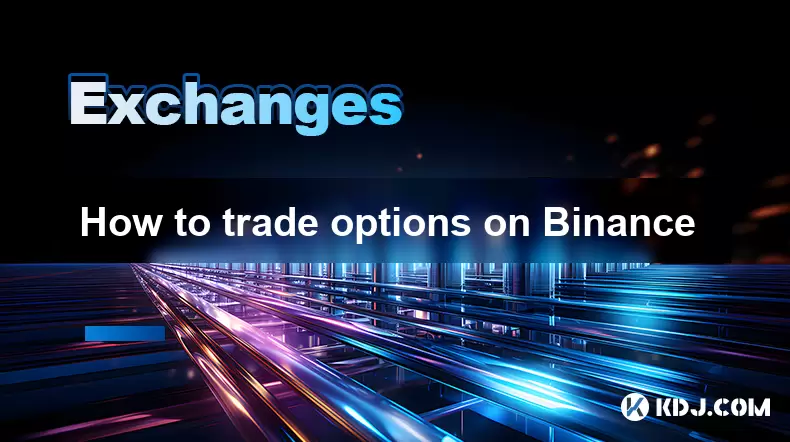
How to trade options on Binance
Jul 08,2025 at 04:35am
Understanding Options Trading on BinanceOptions trading allows investors to speculate on the future price of an asset without owning it. On Binance, users can trade crypto options, which are derivative contracts that give traders the right—but not the obligation—to buy or sell a cryptocurrency at a predetermined price before a specific date. This form o...

How to read Binance charts
Jul 07,2025 at 08:14pm
Understanding the Basics of Binance ChartsReading Binance charts effectively is essential for making informed trading decisions in the cryptocurrency market. Before diving into technical indicators and candlestick patterns, it's important to understand the basic layout of a chart on the Binance platform. The default chart interface displays price moveme...
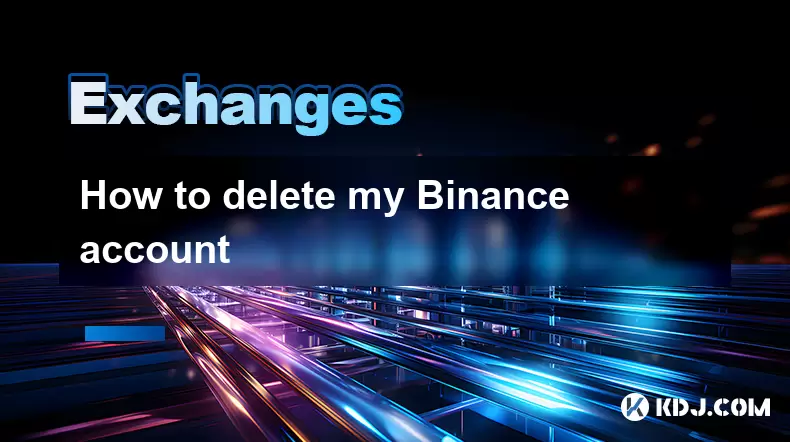
How to delete my Binance account
Jul 08,2025 at 06:35am
How to Delete My Binance AccountIf you're considering deleting your Binance account, it's important to understand the process thoroughly. Binance is one of the largest cryptocurrency exchanges globally, and permanently closing your account involves several steps. This guide will walk you through each necessary action to ensure a smooth deletion. Prepari...
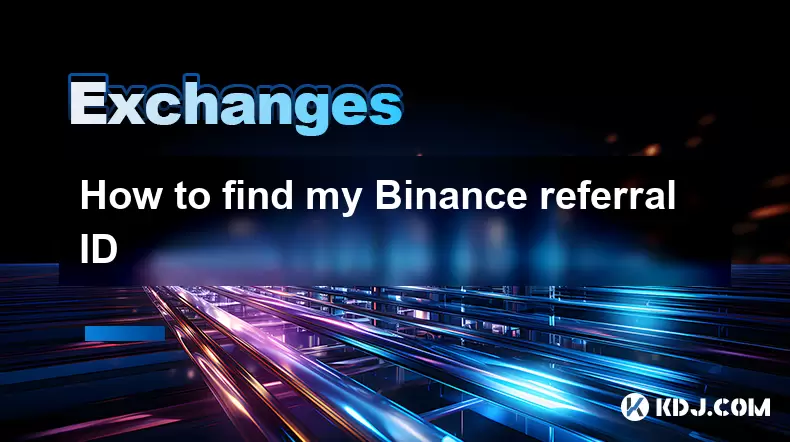
How to find my Binance referral ID
Jul 07,2025 at 06:29pm
What is a Binance Referral ID?A Binance Referral ID is a unique identifier assigned to each user on the Binance platform. This ID allows users to refer new traders to Binance and earn commissions from their trading fees. The referral program is an integral part of Binance’s ecosystem, encouraging community growth and rewarding active participants. Every...

Binance verification rejected why
Jul 07,2025 at 06:57pm
Understanding Binance Verification RejectionIf your Binance verification was rejected, you're likely searching for answers on why this happened and how to resolve it. Binance, as one of the world's largest cryptocurrency exchanges, requires users to complete identity verification to comply with Know Your Customer (KYC) regulations. When a verification r...

How to recover a lost Binance account
Jul 07,2025 at 09:07pm
What Happens When a Binance Account Is Lost?Losing access to your Binance account can be a distressing experience, especially if you hold significant digital assets. This typically occurs due to forgotten login credentials, loss of two-factor authentication (2FA) devices, or compromised accounts. Understanding the exact reason behind losing access is cr...

How to trade options on Binance
Jul 08,2025 at 04:35am
Understanding Options Trading on BinanceOptions trading allows investors to speculate on the future price of an asset without owning it. On Binance, users can trade crypto options, which are derivative contracts that give traders the right—but not the obligation—to buy or sell a cryptocurrency at a predetermined price before a specific date. This form o...

How to read Binance charts
Jul 07,2025 at 08:14pm
Understanding the Basics of Binance ChartsReading Binance charts effectively is essential for making informed trading decisions in the cryptocurrency market. Before diving into technical indicators and candlestick patterns, it's important to understand the basic layout of a chart on the Binance platform. The default chart interface displays price moveme...

How to delete my Binance account
Jul 08,2025 at 06:35am
How to Delete My Binance AccountIf you're considering deleting your Binance account, it's important to understand the process thoroughly. Binance is one of the largest cryptocurrency exchanges globally, and permanently closing your account involves several steps. This guide will walk you through each necessary action to ensure a smooth deletion. Prepari...

How to find my Binance referral ID
Jul 07,2025 at 06:29pm
What is a Binance Referral ID?A Binance Referral ID is a unique identifier assigned to each user on the Binance platform. This ID allows users to refer new traders to Binance and earn commissions from their trading fees. The referral program is an integral part of Binance’s ecosystem, encouraging community growth and rewarding active participants. Every...

Binance verification rejected why
Jul 07,2025 at 06:57pm
Understanding Binance Verification RejectionIf your Binance verification was rejected, you're likely searching for answers on why this happened and how to resolve it. Binance, as one of the world's largest cryptocurrency exchanges, requires users to complete identity verification to comply with Know Your Customer (KYC) regulations. When a verification r...
See all articles

























